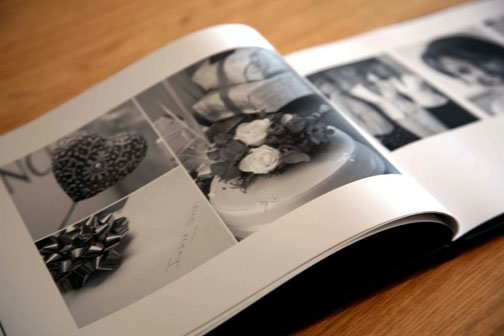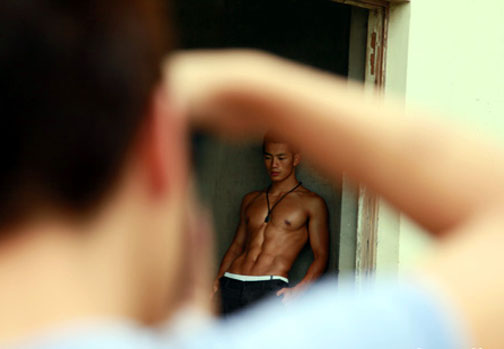Tags
I’m not sure if it’s that everything old is new again or what goes around comes around, once again, but one of my newer photography related practices is really nothing more than a variation of an old one. It’s been a slow, multi-step filled journey. To get back to where I started.
When the photography bug first bit, I had a Minolta SLR. A sturdy, work-horse camera, there was nothing flashy about it. I had to learn about shutter speeds, f-stops, and film speed. You may need to Google ‘35mm camera film’ if you are under thirty.
A friend similarly smitten and I used to take off for a day to shoot. Between us we’d take hundreds of shots of some place that really required less than a dozen. But for us it wasn’t the place so much as the photography. Claiming the cool shot of the day was what it was all about. Of course back then you had to wait a week to get your photos back from the processing lab. If nothing else, it was a lesson in patience.
When my pictures finally arrived, I’d quickly sort through them tossing out the duplicates, the bad shots, the blurry shots, and the ‘what in the hell was that suppose to be’ shots. Lots of wasted money in those days when you really didn’t know how any specific photograph would turn out. But it was a good learning curve. The more pictures I took, the fewer got tossed.
After dumping the bad shots I’d cull through the remainder separating out the not so good from the outstanding, deciding which similar shot was better than the next, and adding even more to the wastebasket since many while a decent shot just didn’t add much to those I planned on keeping. Years later I met a man in Penang who proposed The 7 Shot Rule to me. Too small of a number, but even back in my photographic infancy, quality mattered more than quantity.
But then Monk shots were yet to come.
After the first few handfuls of photographic masterpieces I began storing them in a soon to be huge collection of photo albums. The albums were immense. Filled with thick pages with ‘invisible’ glue and plastic page protectors, you could really only display about three shots on each page. It didn’t take long to fill an album. It didn’t take long to realize the invisible glue turned into visible yellow lines with age either. But regardless, I kept shooting. And the photo albums kept piling up.
Canon revolutionized the SLR camera world, introducing their AE1 programmable camera to the market and I was one of their first customers. I still used my Minolta because of the large collection of lenses I had acquired, but the Cannon was my go-to camera of the day. The revolutionary part was that you could shoot in auto mode: the camera would set aperture and shutter speed for you. You could also set one and let the camera adjust the other for you. Amazing. And pretty boring shots. It was a sexy looking camera, so I used it a lot, but seldom used the auto feature; I didn’t like the loss of control over the outcome or the general lack of pizazz of the shots it produced.
And I started shooting on slide film. Those shots that needed to be printed I could easily crop if so desired and the overall color saturation was much richer than print film produced. Better yet, my ever growing collection of photographs could be stored in a box instead of yet more bulky photo albums.
The advent of digital camera was a nonstarter for me. They were all auto focus/auto shoot. I’d learned my lesson with the AE1 and wasn’t having any of that. Photo quality was pretty bad too if you wanted to print any of those pictures. But the technology improved considerably, and rather quickly; when they finally started making digital SLR cameras it was time for me to hop on board. I bought a top of the line Nikon, a camera that actually allowed you to set shutter speeds and f-stops. And was thrilled with the result. Plus, no more boxes of slides. And no more bulky photo albums. Everything got stored to floppy disk.
Which is a format my computer no longer recognizes.
I’m not one of those camera buffs who can talk for hours about f-stops and DOF. Well, I can, I just have no desire to do so. I know the lingo, but more importantly know how to use the settings to produce the shot I want. But that’s me. A bit of a control freak. I have a friend who I think I mentioned before who fancies himself a photographer. He couldn’t tell you the difference between an f-stop and his ass if his life depended on it. Or if his ass did. Last year National Geographic selected one of his shots for its annual calendar. The world of digital cameras has come a long way. The world of professional photographers: not so much.
I still take a ton more shots than necessary. But no longer have to wait a week to see how they turned out. Now, as soon as I get back to my computer I run through the same culling process I always have. But use the delete button instead of a wastebasket. When I’m shooting in Thailand, my friend Noom likes to make the initial cut. But he is a bit too fond of the word ‘delete’ – evidently you can’t just hit delete, you have to say it too. He breaks his litany of deletes with an occasional ‘blurry’. But it still earns a quick tap of the delete key. When he’s feeling generous he’ll offer up a “Not good.” But I have to keep an eye on him. Any picture that he isn’t prominently featured in risks being deemed ‘not good’ and deleted.
I’ve stuck to digital, upgraded my camera every few years, went from storing photos on floppy disks to CDs to DVDs to thumb drives, and eventually stored them as slideshows for each trip I took, or whenever I amassed a bunch of shots that covered a specific category. The slideshow format made for a pleasant viewing, something that just didn’t happen with clicking on individual pictures. It was pretty close to browsing through an old photo album. But without the aged, yellow not invisible glue.

So, yeah, sometimes I’m a bit slow on what’s new in the marketplace. Custom photo books were a new idea to me, the industry reports Americans produced 17 million photo books last year.
A few years ago I was chatting with a fellow camera buff and he showed me books he had printed of his photographs. Amazing. A beautiful presentation, they looked as good as professionally published coffee table books. I was hooked. And started turning my digital photos into printed photo books. The photo storage options process took years, and I’m now back to having photo albums to browse through. But they are much thinner than the old fashioned style. And not very expensive to have made.
I just bought a new Nikon. A D7000. I’ll enjoy learning how to not use its many features. I’m still having my photos turned into photobooks. But the word is books are becoming a thing of the past. Electronic media is all the rage. It seems that, perhaps, my journey is not yet over. I think I’m going to be running through the entire set of photo storage steps yet again.




This is new for me. I read through this post, I can’t believe it. Got lost a few times but persisted
lol.
Ah you young’uns.
On occasion I’ll mention watching just black and white tv as a chile and I get the strangest looks!
Good on you for preserving jahnnie. But you know you could have just scrolled down to some nude dude’s photo instead. Which I’m sure was taken with a digital camera.